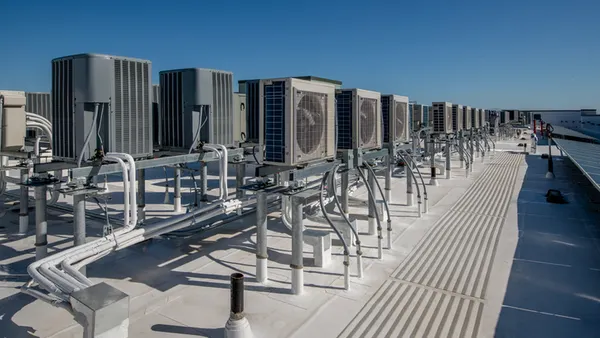Dive Brief:
- The U.S. Department of Energy issued a $425 million funding opportunity on March 8 to support small- and medium-sized manufacturers in reducing industrial emissions and advancing clean-energy manufacturing.
- Eligible industrial decarbonization projects include energy efficiency upgrades; electrification; use of low-carbon fuels, feedstocks and energy sources; materials efficiency and substitutions; alternative processes; carbon capture utilization and storage; and other existing best practices. Grants can cover full facility builds and facilitywide upgrades as well as critical units or individual process lines.
- Proposed projects must be located in eligible energy communities, which DOE defines as census tracts in which a coal mine closed after Dec. 31, 1999, or where a coal-fired, electricity-generating power plant unit closed after Dec. 31, 2009, or the tracts adjacent to them.
Dive Insight:
The decarbonization funding opportunity is a new expansion of DOE’s Advanced Manufacturing and Recycling Grants program, which previously invested $275 million in projects to ramp up production of technologies that reduce the nation’s reliance on fossil fuels and mitigate climate impact. Those technologies include insulated windows essential for building retrofits, wind turbines and grid components.
While this funding’s overall objective is to reduce greenhouse gas emissions in the U.S. manufacturing sector, reducing pollutants and other wastes are also relevant considerations for projects and awards, according to the March 8 funding opportunity announcement.
Projects that seek funding for facilitywide decarbonization upgrades are expected to maintain parity or reduce energy intensity with commercially available “state-of-the-art technology unless otherwise justified by enabling deeper decarbonization.” An example of the latter the announcement gives is process electrification in preparation for a clean grid. The project must demonstrate a minimum total annual GHG emissions reduction of 5,000 metric tons of carbon dioxide equivalent per year.
These projects should not substantially increase the use of on-site energy without an overall lifecycle benefit, nor should they increase the environmental burden on local communities, the DOE said. While proposed projects should demonstrate a cost benefit of less than $2,000 per metric ton of CO2 equivalent per year, applicants that cannot achieve that must provide a clear explanation of why and how the proposed project aligns with the goals of the funding opportunity and will have a substantial impact that justifies funding, the DOE said.
The funding opportunity also continues to cover projects that aim to establish or re-equip or expand existing manufacturing or recycling facilities for the production and recycling of advanced energy systems. Eligible properties include those designed to produce renewable energy, fuel cells and other energy storage systems, electric grid modernization equipment, equipment designed to refine renewable fuels and products, and properties designed to capture, transport, remove or sequester carbon oxide emissions or to produce energy conservation technologies.
Facilities that are re-equipped to produce or recycle electric or fuel cell vehicles, as well as those that produce technologies, components, materials and associated charging or refueling infrastructure, are also eligible for funding, the DOE said.
Applicants must submit concept papers by April 8, with full applications due June 24.










